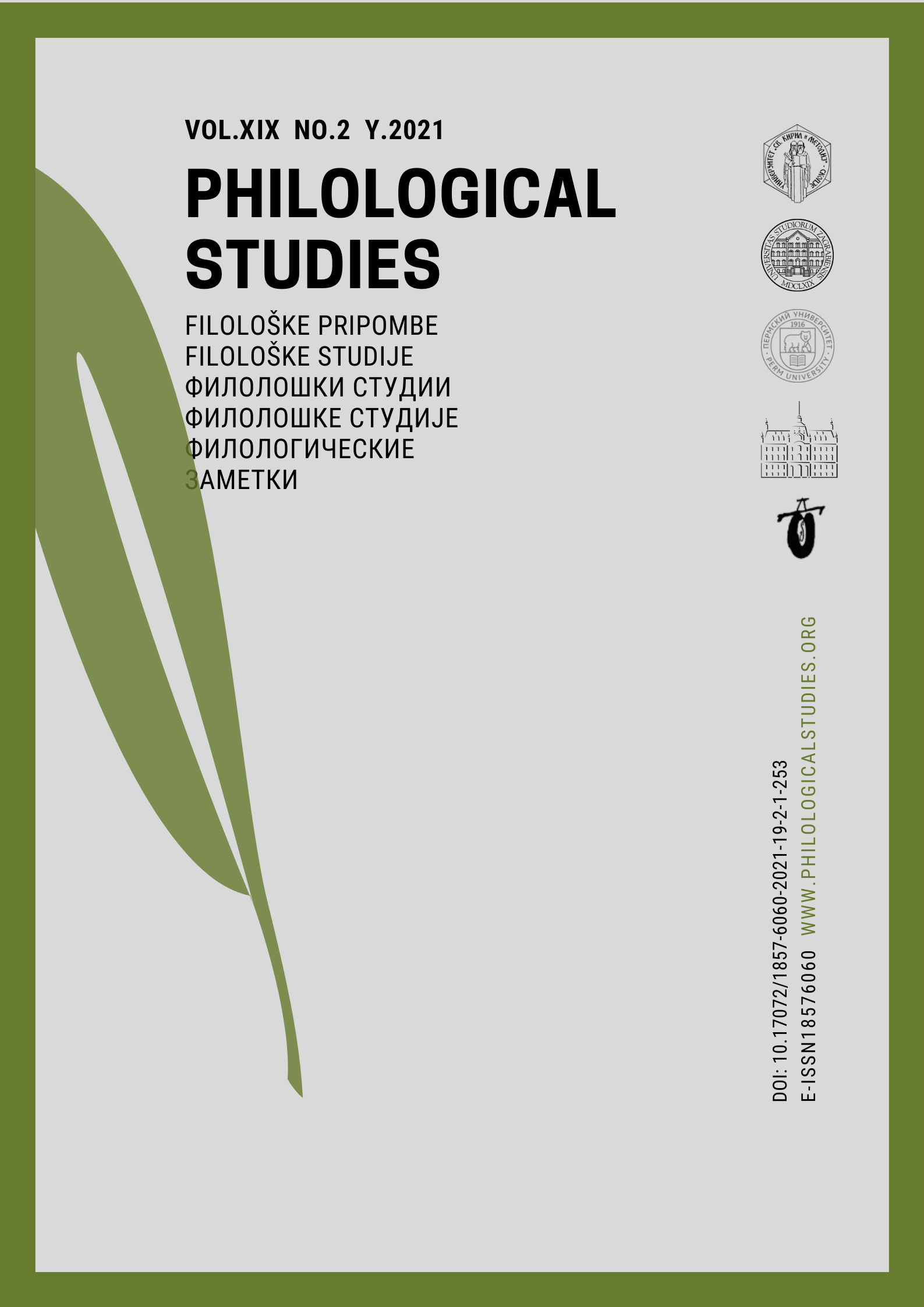DRUŠTVENO-ISTORIJSKI I TEHNOLOŠKI USLOVI NASTANKA NAUČNOFANTASTIČNOG ŽANRA
Сажетак
Naučnofantastični žanr u svim vrstama medija neretko je zanemarivan u ozbiljnoj raspravi naučne javnosti. Prema ustaljenom mišljenju, njegov nastanak se povezuje sa pisanjem Žila Verna i Herberta Džordža Velsa krajem 19. veka i nije često ozbiljnije analiziran iz perpektive društvenog uticaja. Međutim, on upravo nastaje kao odgovor na velike društvene promene industrijalizacije i razvoja novih tehnologija, prikazujući mogućnosti napretka, ali i nove moralne, psihološke i društvene probleme koje ga prate. Sa pojavom filma, a naročito televizije, on dobija na svojoj izražajnoj snazi i obrađuje neke od veoma kompleksnih i značajnih problema savremenog društva kroz prizmu fikcije.
Cilj rada je da kroz istorijski prikaz i analizu nekih od najznačajnijih dela naučne fantastike ukaže na društvene i tehnološke uslove njihovog nastanka i razvoja. U radu su prikazana i analizirana dela Verna, Velsa, Asimova, Klarka, Čapeka, ali i veliki televizijski i filmski serijali poput Zvezdanih staza. Utvrđeno je da postoji visok stepen uticaja društvenih okolnosti, napretka naučne misli i tehnologija na razvoj ovog žanra.
Downloads
Референце
Appel, M., Krause, S., Gleich, U., Mara, M. (2016). Meaning through fiction: Science fiction and innovative technologies. Psychology of Aesthetics, Creativity, and the Arts 10(4). 472-480.
Augé, E. (2014). Why our world needs science fiction. TEDxErasmusUniversity. [Video]. YouTube. https://www.youtube.com/watch?v=FJkixvgJqsY (Accessed 03.02.2020.)
Booker, M. K., Thomas, A. (2009). The Science Fiction Handbook. United Kingdom: Wiley-Blackwel.
Bramlett-Solomon, S. (2006). Interracial love on television: What’s taboo still and what’s not. Critical Thinking About Sex, Love, and Romance in the Mass Media: Media Literacy Applications. 85-93.
Brigs, A., Berk, P. (2006). Društvena istorija medija. Beograd: Clio.
Cavallaro, D. (2000). Cyberpunk and cyberculture: Science fiction and the work of William Gibson. London: Athlone Press.
Csicsery-Ronay, I. (1991). Editorial Introduction: Postmodernism's SF/SF's Postmodernism. Science-Fiction Studies 18/3, 305-308.
Csicsery-Ronay, I. (2003). Science Fiction and Empire. Science Fiction Studies 30(2). 231-245.
Daley, C. (2013). Case Studies in Reading 1: Key Primary Literary Texts. The Science Fiction Handbook. London: Bloomsbury Publishing. 75-100.
Dunn, W. (2019). How Chinese novelists are reimagining science fiction. URL: https://www.newstatesman.com/chinese-science-fiction-dystopia-liu-cixin-triology (Accessed 19.02.2020.)
Gavrilović, Lj. (1986). Naučna fantastika: mitologija tehnološkog društva. Antropologija naučne fantastike [Science Fiction: Mythology of a Technological Society. Anthropology of Science Fiction]. Beograd: Odeljenje za etnologiju i antropologiju Filozofskog fakulteta u Beogradu. 19-24. (In Serbian.)
Georgiadou, A., Larmour, D. H. J. (1998). Lucian's science fiction novel. True histories: Interpretation and commentary. Leiden: Brill.
Gopman, V. (1996). New Islands in the Gutenberg Ocean: The Problems of Publishing Science Fiction in Russia. Science Fiction and Market Realities. Georgia: University of Georgia Press. 161-171.
Hubble, N. (2013). The Historical Context of Science Fiction. In: Hubble, N., Mousoutzanis, A. (Eds.). The Science Fiction Handbook. London: Bloomsbury Publishing. 1-15.
James, Edward. (1994). Science Fiction in the 20th Century. Oxford: Oxford University Press.
Ji, S. W., Waterman, D. (2011). Production Technology and Trends in Movie Content: An Empirical Study. URL: https://www.researchgate.net/publication/228448250_Production_Technology_and_Trends_in_Movie_Content_An_Empirical_Study (Accessed: 19.02.2020.)
Krstić, P. (2012). Zemne staze Enterprajza: nauka i naučna fantastika. Antropologija 12(3) [The Earth Trek of the Enterprise: Science and Science Fiction. Antrophology 12(3)]. 73-97. (In Serbian.)
Lucas, P. (2018). Bacon’s New Atlantis and the Fictional Origins of Organised Science. Open Cultural Studies 2. 114-121.
Makluan, M. (1971). Poznavanje opštila – čovekovih produžetaka. [Understanding Media: the Extensions of Man] Beograd: Prosveta. (In Serbian.)
Mamford, L. (2009). Tehnika i civilizacija [Technics and civilization]. Novi Sad: Mediterran. (In Serbian.)
Miller, C., & Bennett, I. (2008). Thinking longer term about technology: Is there value in science fiction-inspired approaches to constructing futures? Science and Public Policy 35(8), 597-606. https://doi.org/10.3152/030234208X370666
Roberts, A. (2000). Science Fiction – The New Critical Idiom. New York: Routledge.
Serjeantson, R. (2018). Natural knowledge in the New Atlantis. In: F. Bacon (2018) New Atlantis: A Utopian Novel. Scots Valley: CreateSpace.
Shedroff, N., Noessel. C. (2012). Make it so: learning from sci-fi interfaces. Proceedings of the International Working Conference on Advanced Visual Interfaces (AVI ’12). New York: Association for Computing Machinery. 7-8.
Sigma, Xi. (2010). The Scientific Research Society. Did Science Fiction Influence You? URL: https://www.sigmaxi.org/docs/default-source/About/Support-Sigma-Xi/scifiprompt2010.pdf?sfvrsn=9a6ac58_0 (Accessed 19.02.2020.)
Simoson, A. (2010). Voltaire’s riddle. Micromegas and the measure of all things. Dolciani Mathematical Expositions 39, Washington: Mathematical Association of America.
Suvin, D. (1979). Metamorphoses of Science Fiction. New York: Yale University Press.
Vidulin-Orbanić, S. (2008). Fenomen slobodnog vremena u postmodernom društvu. Metodički obzor 3 (2008) 2 (6) [The Phenomenon of Leisure Time in Postmodern Society. Methodological Horizons 3 (2008) 2 (6)]. 19-33.
Viglas, K. (2016). The Placement of Lucian’s Novel True History in the Genre of Science Fiction. Interlitteraria 21 (1). 158-172.
Wheeler, P. (2013). Isues of Gender, Sexuality and Ethnicity. The Science Fiction Handbook. London: Bloomsbury Publishing. 209-237.
Сва права задржана (c) 2021 Ilija Milosavljević

Овај рад је под Creative Commons Aуторство-Nекомерцијално-Без прераде 4.0 Интернационална лиценца.
Philological studies © 2019. This work is licensed under a Creative Commons Attribution-Noncommercial-No Derivative Works 3.0 Unported License










